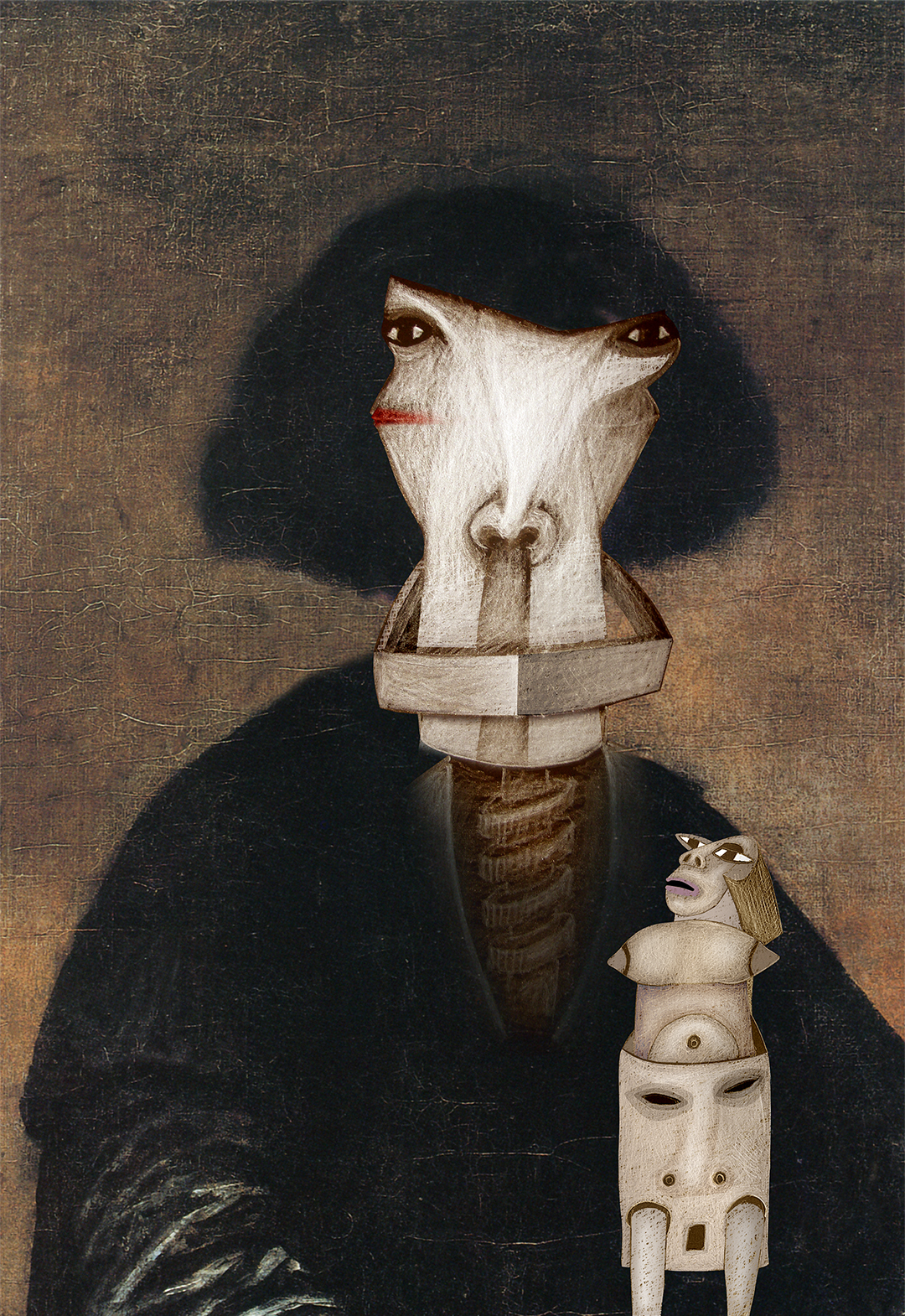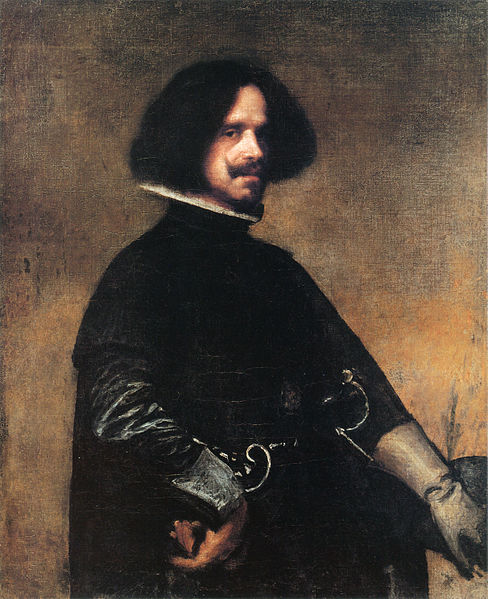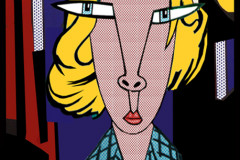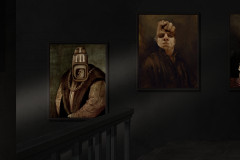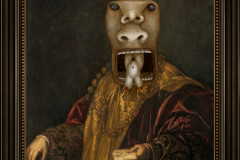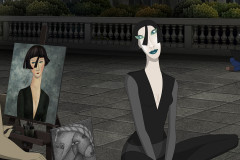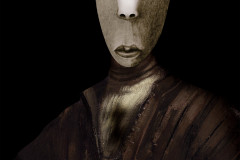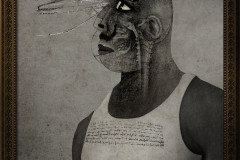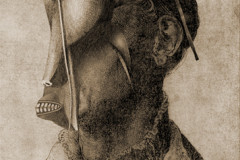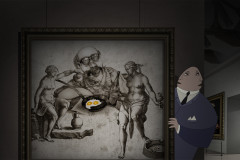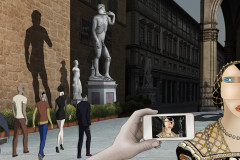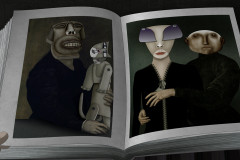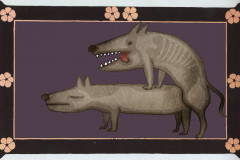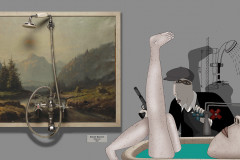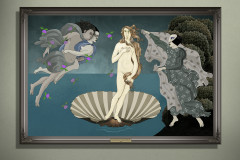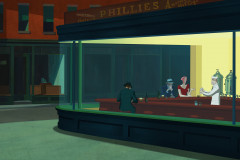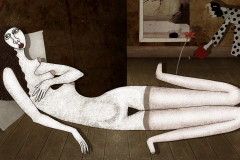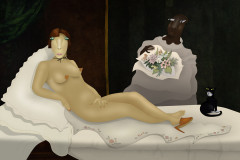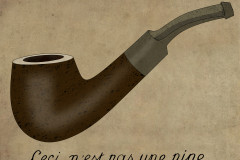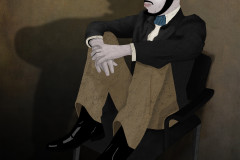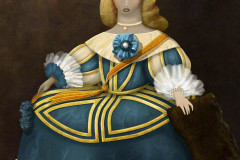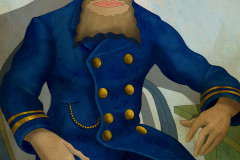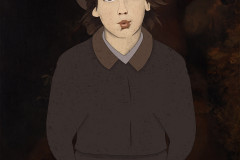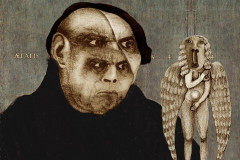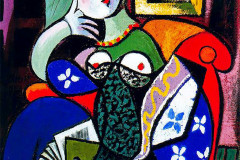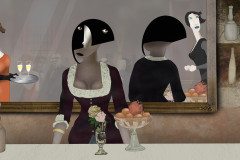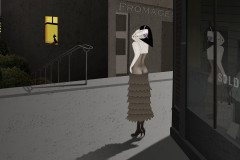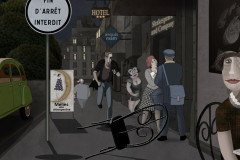Velázquez, Diego (1599-1660): Önarckép, 1645 (olaj, vászon, 104 x 83 cm, Firenze, Uffizi). A spanyol barokk festészet legnagyobb alakja udvari festőként dolgozott IV. Fülöp király udvarában, de nem csak a királyi család tagjairól, hanem önmagáról is készített jó néhány arcképet. A filmben ez az önarckép - Velázquez kezében egy egészen különös tárggyal kiegészülve - a Musée d'Orsay falán látható.
A spanyol király első számú udvari festőjeként Velázquez nemcsak művészi tevékenységet végzett, hanem, királyi kamarás, és diplomata is volt. Önarcképén nem is festőként jelenik meg, hanem inkább egy udvari nemes előkelő pózában, s nem is ecset és paletta van a kezében, hanem kard – udvari tisztségeinek szimbóluma. Velázquez portréfestészetére a realisztikusság jellemző, nem idelizálja, azaz nem szépíti portréalanyait, az elegancia mellett is természetességgel festi meg őket – saját magát is. A barokk festészetben gyakori erőteljes fény-árnyék hatások is jól megfigyelhetőek a képen: az ebben az időben szokásos háromnegyedprofilos beállítás miatt is az arc egyik fele szinte teljesen árnyékban van, a másik erőteljes megvilágításban látszik. A fehér gallér is kiemeli, szinte különválasztja a fejet a sötét ruhás testtől, amelynek nagy felülete és a háttér szürkés-barnás árnyalatai is komor, szigorú hangulatot árasztanak – ahogy a merevségéről hírhedt spanyol udvari környezetet elképzelhetjük.
Velázquez, Diego (1599–1660): Self-Portrait, 1645 (oil on canvas, 104 x 83 cm, Uffizi Gallery, Florence). The greatest figure of Spanish Baroque painting, Velázquez served as court painter to King Philip IV, producing portraits not only of the royal family but also of himself. In Ruben Brandt, Collector, this self-portrait appears on the wall of the Musée d'Orsay—though in the film, Velázquez holds a rather unusual object in his hand.
As the Spanish king’s foremost court painter, Velázquez was more than just an artist; he also held noble titles and served as a royal chamberlain and diplomat. In this self-portrait, he does not appear as a painter but rather as a court nobleman, adopting a dignified pose. Instead of a brush and palette, he holds a sword—symbolizing his official roles at court. His portraiture is known for its realism; he did not idealize or flatter his subjects, capturing them with natural elegance—himself included.
Typical of Baroque portraiture, the painting features dramatic contrasts of light and shadow. The three-quarter profile composition—common in the period—means one side of his face is cast in deep shadow, while the other is illuminated with strong light. The stark white collar accentuates and visually separates the head from the dark clothing, which dominates the canvas. The muted gray-brown background and the broad mass of the dark torso contribute to the painting’s austere, formal atmosphere—one that echoes the rigidity often associated with the Spanish royal court.






